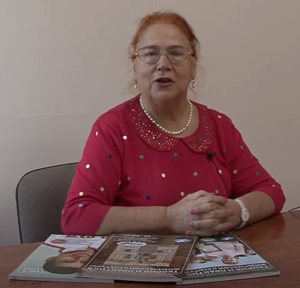Modification of skating technique when takeing a turn on PTFE skis sliding surface
ˑ:
PhD, Associate Professor N.P. Gerasimov¹
PhD, Associate Professor R.E. Petrov²
PhD, Associate Professor A.P. Knyazev³
PhD, Associate Professor N.А. Khramov4
¹Kazan National Research Technical University named after A.N. Tupolev–KAI, Naberezhnye Chelny branch, Naberezhnye Chelny
²Yelabuga Institute (branch) of Kazan (Volga Region) Federal University, Yelabuga
³Udmurt State University, Izhevsk
4Kutafin Moscow State Law University (MSAL), Moscow
Abstract
Objective of the study was to substantiate the technique of modifying the skating stroke “Jump turn cornering techniques” when making a turn on skis with a fluoroplastic sliding surface.
Results and conclusions. The article provides a rationale for the author’s modification of the “skating” technique when making a turn on an incline on skis with a fluoroplastic sliding surface “Jump turn cornering techniques”, which was performed on the basis of video analysis of students’ movements and a comparison with the “simultaneous two-step move” technique. Jump turn cornering techniques is a variant of a simultaneous two-step skating move with elements of a half-skate move, performed when moving at high speed uphill, in sections with a turn in the uphills. The use of this stroke is due to changes in the lift profile when a turn appears. It is advisable to use the move when the turning radius approaches 25 meters. The technique of performing the move is characterized by a quick “jump-like” push-off with the foot and an impact push-off with the hands with a quick transition to another sliding support.
Keywords: sliding surface of skis, fluoroplastic, coefficient of friction, sliding, skating techniques, simultaneous two-step skating stroke, filmogram, skating techniques «Jump turn cornering techniques».
References
- Bogoslov E.A., Gerasimov N.P., Danilaev M.P. et al. Eksperimentalnyye issledovaniya effektivnosti skolzyashchey poverkhnosti lyzh iz ftoroplasta [Experimental studies of the effectiveness of the sliding surface of skis made of fluoroplastic]. Ekstremalnaya deyatelnost cheloveka: nauchno-metodicheskiy zhurnal. 2015. No. 2 (35). pp. 70-75.
- Borisov B.A., Dubchak V.A., Shulgin A.I. Lyzhnaya podgotovka v programme vuza [Ski training in the university program]. Kemerovo, 2010. 109 p.
- Gerasimov N.P. Analiz sovershenstvovaniya skolzyashchey poverkhnosti lyzh i metodov uluchsheniya skolzheniya begovykh lyzh [Analysis of improving the sliding surface of skis and methods for improving the gliding of cross-country skis]. Teoriya i praktika fizicheskoy kultury. 2016. No. 11. pp. 69-70.
- Gerasimov N.P. Povysheniye effektivnosti sportivnoy podgotovki lyzhnikov v neprofilnykh vuzakh s uchetom innovatsiy v sportivnom inventare [Increasing the efficiency of sports training of skiers in non-core universities taking into account innovations in sports equipment]. Fizicheskaya kultura: vospitaniye, obrazovaniye, trenirovka. 2018. No. 2. pp. 52-54.
- Mikhalev V.I., Koryagina Yu.V., Antipova O.S. et al. Sovremennaya lyzhnaya tekhnika: sochetaniye moshchnosti i ekonomichnosti (po dannym zarubezhnoy literatury) [Modern ski equipment: a combination of power and efficiency (according to foreign literature)]. Uchenyye zapiski universiteta im. P.F. Lesgafta. 2015. No. 4 (122). pp. 132-138.
- Novikova N.B., Zakharov G.G. Osobennosti sovremennoy tekhniki lyzhnykh khodov i metodicheskiye priyemy individualnoy korrektsii dvizheniy [Features of modern skiing techniques and methodological techniques for individual correction of movements]. St. Petersburg: FGBU SPbNIIFK publ., 2017. 72 p.
- Marsland F., Lyons K., Anson J., Waddington G., Macintosh C., Chapman D. Identification of Cross-Country Skiing Movement Patterns Using Micro-Sensors. 2012. № 12. pp. 5047-5066; DOI: 10.3390/sl20405047
- Meyer F., Kocbach J., Tjønnås J., Danielsen J., Seeberg T.M., Austeng A. & Ø. Sandbakk Temporal and kinematic patterns distinguishing the G2 from the G4 skating sub-technique. Sports Biomechanics. 2021. DOI: 10.1080/14763141.2021.1959948 https://doi.org/10.1080/14763141.2021.1959948


